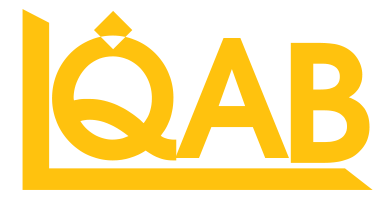Dimension Calibration Made Easy for Perfect Results
Imagine you’re building a model airplane with lots of tiny parts. Each part has to fit perfectly into the next for everything to work right. Now, what if the parts are too big or too small? Your airplane wouldn’t come together properly! This is where dimension calibration comes in.
Dimension calibration is like making sure you’re using the right-sized tools to measure things correctly, so everything fits just right. In this article, we’re going to talk about how you can easily calibrate your tools to get perfect results every time!
What is Dimension Calibration?
Let’s break it down simply: dimension calibration is the process of making sure that the tools you use to measure things are giving you accurate measurements. It’s like checking if a ruler is showing the right length before you use it to measure something.
For example, when you use a ruler to measure the length of a pencil, you need to make sure the ruler is giving you the correct number of centimeters or inches. If your ruler is wrong, your pencil won’t measure correctly, and that can mess up the whole project!
Why is Dimension Calibration Important?
Here’s why dimension calibration is super important:
- Wrong measurements can cause problems. Imagine you’re building a toy car, and the wheels are too big for the body. It won’t work, right? That’s why we need to make sure our measuring tools are correct.
- It helps make better products. Whether it’s a phone, a toy, or even a part of a car, everything has to be measured accurately to make sure it works the way it should.
- It keeps everyone safe. For things like airplanes or cars, wrong measurements can even lead to accidents or safety issues! Calibration makes sure that parts fit correctly and safely.
- It’s a rule in the industry. Many companies must follow strict rules, like NABL and ISO 17025, to make sure their tools and measurements are correct. This keeps everything up to standard and ensures high-quality products.
Tools Used for Dimension Calibration
There are many tools we use to measure things, and each one needs to be calibrated:
- CMM Machines: These are big machines that measure parts in 3D. They are super accurate and used for measuring parts in manufacturing.
- Calipers: These are hand-held tools that measure the thickness or diameter of an object.
- Micrometers: These measure very small parts with great accuracy.
- Gauge Blocks: These are special blocks that are used to check if other tools are measuring things properly.
With new technology, we also use 3D scanners that are faster and give super-accurate measurements!
Step-by-Step Guide for Easy Dimension Calibration
Let’s go through easy steps to calibrate your measuring tools! It’s simpler than you might think.
Step 1: Select the Right Tools
Choose the tool that matches the size and type of object you need to measure. For example, if you need to measure something really tiny, use a micrometer. If you’re measuring something bigger, a CMM machine might be a better choice.
Step 2: Prepare the Instruments and Environment
Before you start measuring, make sure your tools are clean and not damaged. Also, check the place where you’re working—things like temperature and humidity can affect how accurate your tools are. It’s best to calibrate in a stable, controlled environment.
Step 3: Perform Calibration
Now, it’s time to check if your tool is measuring correctly. Use something that has a known size (like a gauge block) and measure it with your tool. If your tool gives the correct reading, you’re good to go!
Step 4: Record Calibration Data
Write down your results! This helps you keep track of how well your tools are performing. Plus, if anything ever goes wrong, you can look back at your notes to figure out what happened.
Step 5: Verify Calibration
Do one last check to make sure everything is working correctly. If your tool measures properly again, then you’re all set! This is the final step to make sure your measurements are perfect.
Common Challenges in Dimension Calibration
Sometimes things don’t go as planned, and you might face a few problems:
- Tool wear: Over time, your tools might get a little worn out and not measure correctly. That’s why it’s important to check your tools regularly.
- Environmental changes: Things like heat or humidity can affect your measurements. That’s why it’s important to calibrate in a stable place.
Tip: Regularly clean and check your tools, and always calibrate in the same kind of environment to avoid mistakes.
Best Practices for Ongoing Dimension Calibration
Once your tools are calibrated, keep them in top condition:
- Calibration intervals: Your tools should be checked at regular intervals. Depending on how often you use them, it might be every month, every three months, or so on.
- Tool Maintenance: Clean your tools and check for any damage.
- Training: Make sure everyone using the tools knows how to calibrate them properly.
Conclusion
So, there you have it! Dimension calibration is essential for making sure that everything from toys to cars is measured correctly and fits together perfectly. By following these simple steps, you can ensure that your tools give you the right measurements every time, leading to better products, fewer mistakes, and more satisfied customers.
Call to Action (CTA)
Want to make sure your tools are always calibrated correctly? Quality Laboratory offers expert calibration services and high-quality tools like Precision Granite Plates, 3D Scanners, and Measuring Instruments. Visit our website today and explore our range of tools and services!
🔗 Check out our services now at Quality Laboratory!

